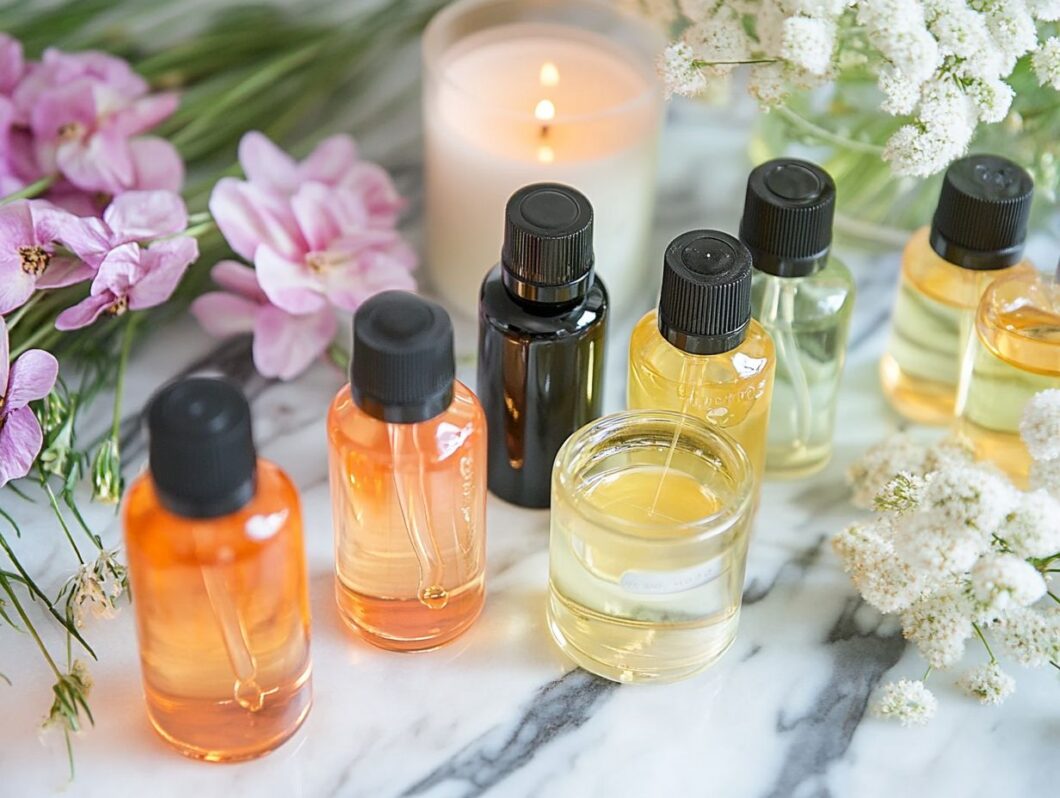Fragrance layering is an art that can significantly enhance my scent experience, allowing me to create a fragrance that is uniquely my own.
By combining body oils with my favorite perfumes, I can improve both the longevity and complexity of the fragrance. This guide delves into the benefits of body oils, outlines a step-by-step approach to layering, and offers valuable tips for selecting the perfect scent combinations.
Additionally, it addresses potential risks to ensure that I can enjoy this practice safely. I am excited to discover how to craft my signature scent that lasts throughout the day!
Key Takeaways:
Understanding Fragrance Layering
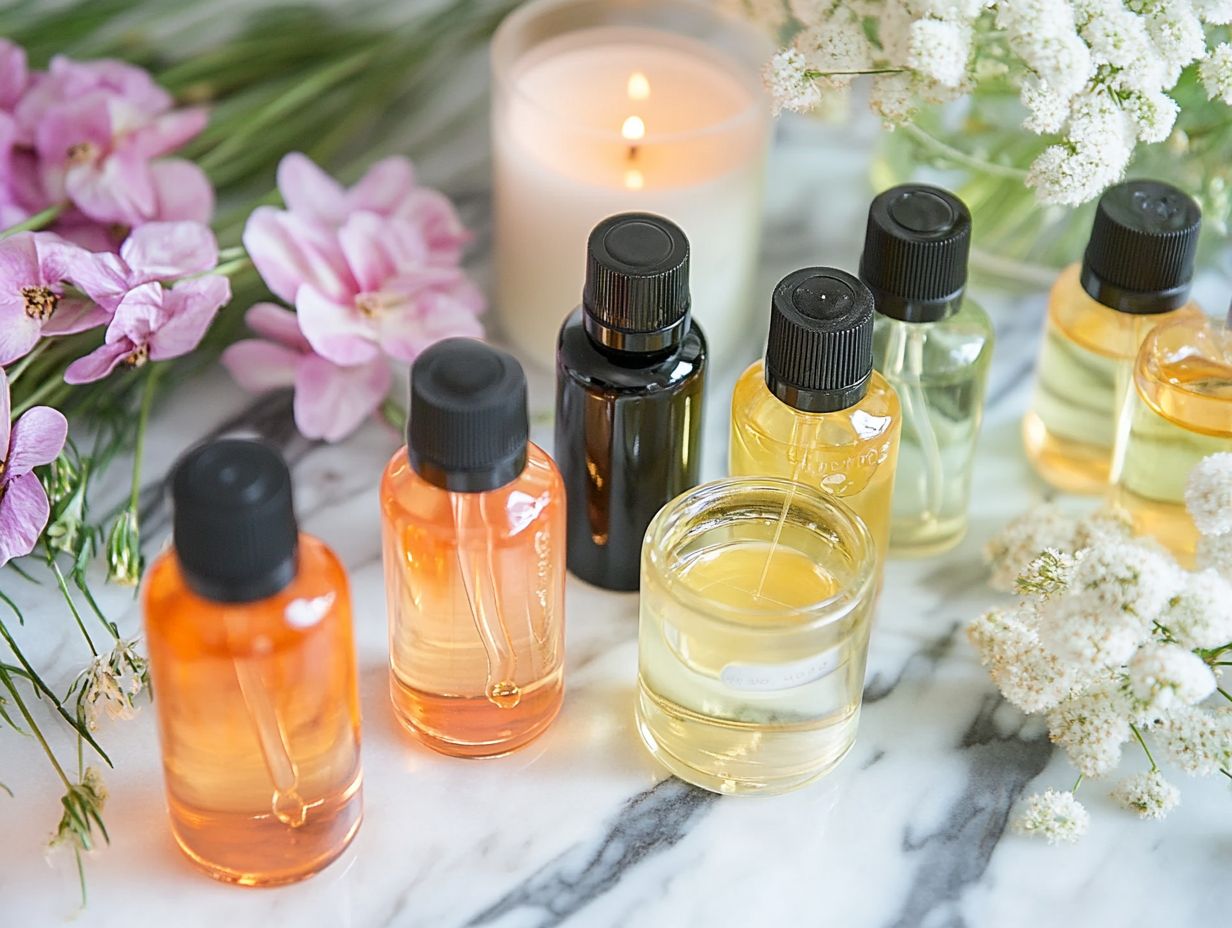
Fragrance layering is the art of combining multiple scents to craft a custom aromatic experience that truly reflects my individual preferences and style.
This practice enables me to personalize my scent profile by blending various perfume oils, essential oils, and body products, resulting in a unique fragrance that evolves throughout the day.
As I have learned from fragrance professionals, mastering the technique of layering perfumes and understanding the roles of top notes, middle notes, and base notes can significantly enhance the durability and longevity of the fragrance.
Through my exploration of fragrance layering, I am discovering its nuances and benefits for identifying my signature scent.
What is Fragrance Layering?
Fragrance layering is the practice of applying multiple scented products to develop a complex and personalized fragrance experience.
This innovative technique has its roots in the art of perfumery, where scent blending has been utilized for centuries to enhance the enjoyment of fragrances. In today’s fragrance industry, fragrance layering is highly relevant as it enables individuals to express their unique personality and create an aromatic signature that evolves throughout the day.
By combining various aromatic compounds—such as lotions, oils, and perfumes—I can engage in scent experimentation, resulting in a multifaceted fragrance profile. This approach not only elevates the overall aromatic experience but also contributes to a longer-lasting presence, as the different layers interact with skin chemistry and environmental factors to create a harmonious and enduring scent journey.
The Benefits of Body Oils
I find that body oils provide numerous benefits, particularly in their capacity to deliver deep hydration and a long-lasting scent that enhances any fragrance layering routine.
The moisturizing properties of body oils nourish the skin while creating an olfactory bridge that facilitates better interaction with perfumes.
By integrating body oils into my fragrance application strategy, I can ensure a lasting scent while also enjoying the added advantages of fragrance layers that contribute to a rich aromatic experience throughout the day.
Moisturizing and Nourishing Properties
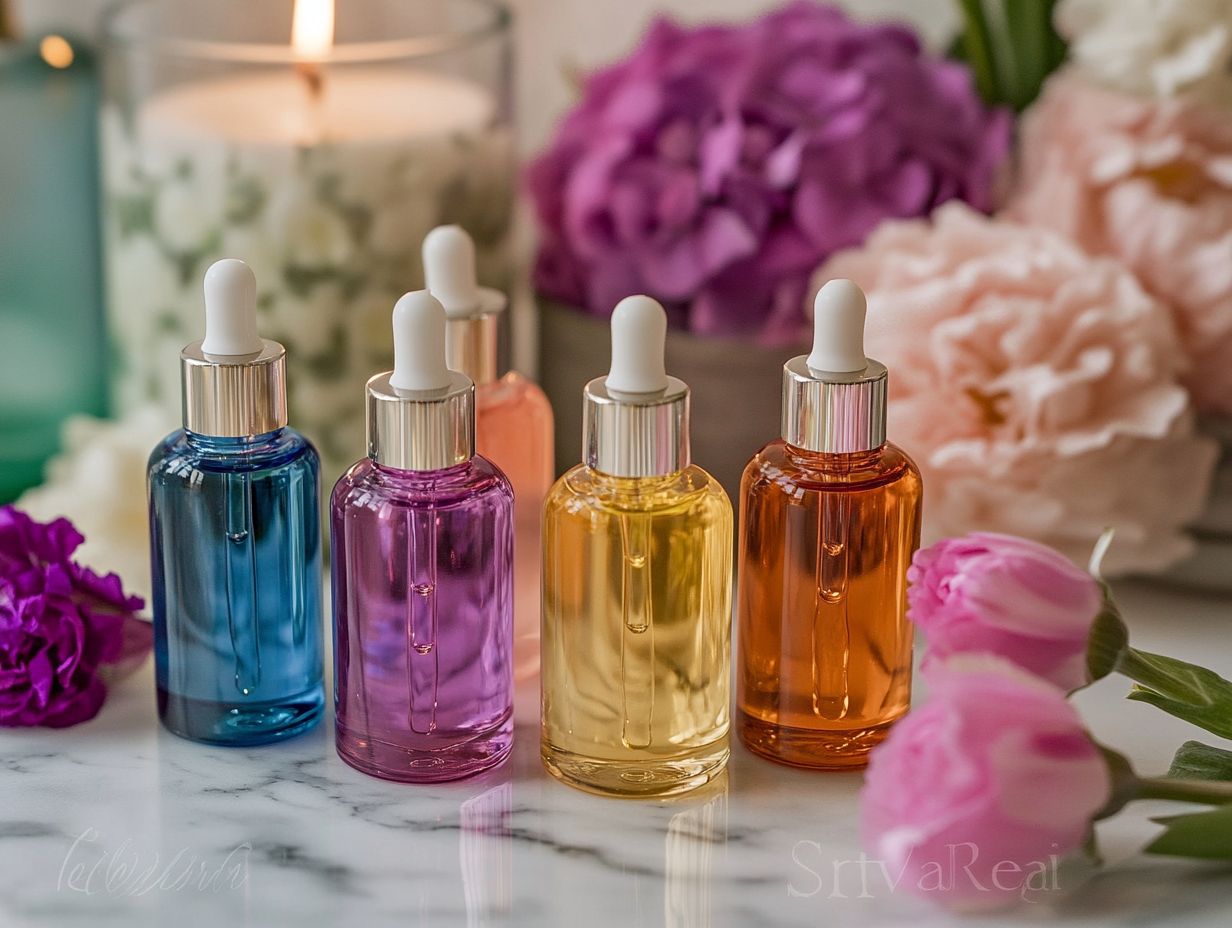
I appreciate the moisturizing and nourishing properties of body oils, which are essential for maintaining healthy skin while also enhancing the fragrance experience.
These luxurious oils provide intense hydration and serve as an excellent base for layering scents, allowing me to create a unique olfactory signature that reflects my personal style. Upon absorption, body oils leave a velvety finish on the skin, effectively sealing in moisture and delivering long-lasting hydration.
I find that different types of body oils, such as almond, jojoba, and argan oil, are often infused with botanical extracts that elevate the sensory experience even further.
For example, a blend containing lavender essential oil can promote relaxation and tranquility, while citrus-infused variants can invigorate and uplift the mood. This demonstrates that the right body oil not only serves practical purposes but also allows for personal expression through scent.
Long-Lasting Scent
One of the primary benefits I find in using body oils for fragrance layering is their remarkable ability to create a long-lasting scent that endures throughout the day. This durability stems from the way body oils interact with perfumes; they act as a fixative, anchoring the fragrance molecules to my skin.
When I apply these oils strategically to pulse points such as my wrists, neck, and behind my ears, they enhance the overall scent experience, making the fragrance both rich and dynamic. Choosing oils with complementary scents further amplifies the top notes of the perfume, resulting in a deeper olfactory profile.
By mastering my application technique, I can elevate my fragrance routine into an art form, maximizing the allure and presence of my chosen scent.
How to Layer Body Oils with Perfume
Layering body oils with perfume allows me to create a harmonious blend that enhances my personal fragrance experience.
To effectively layer fragrances, I begin by applying a body oil that complements the perfume I plan to wear. This technique enables me to craft unique scent combinations that elevate the overall aromatic experience and leave a lasting impression.
“`html
By understanding the science behind scent profiles and layering techniques, I can master the art of fragrance blending and enjoy an olfactory journey that is distinctly my own. For more insights, check out Why You Should Try Fragrance Layering with Body Oils.
“`
Step-by-Step Guide
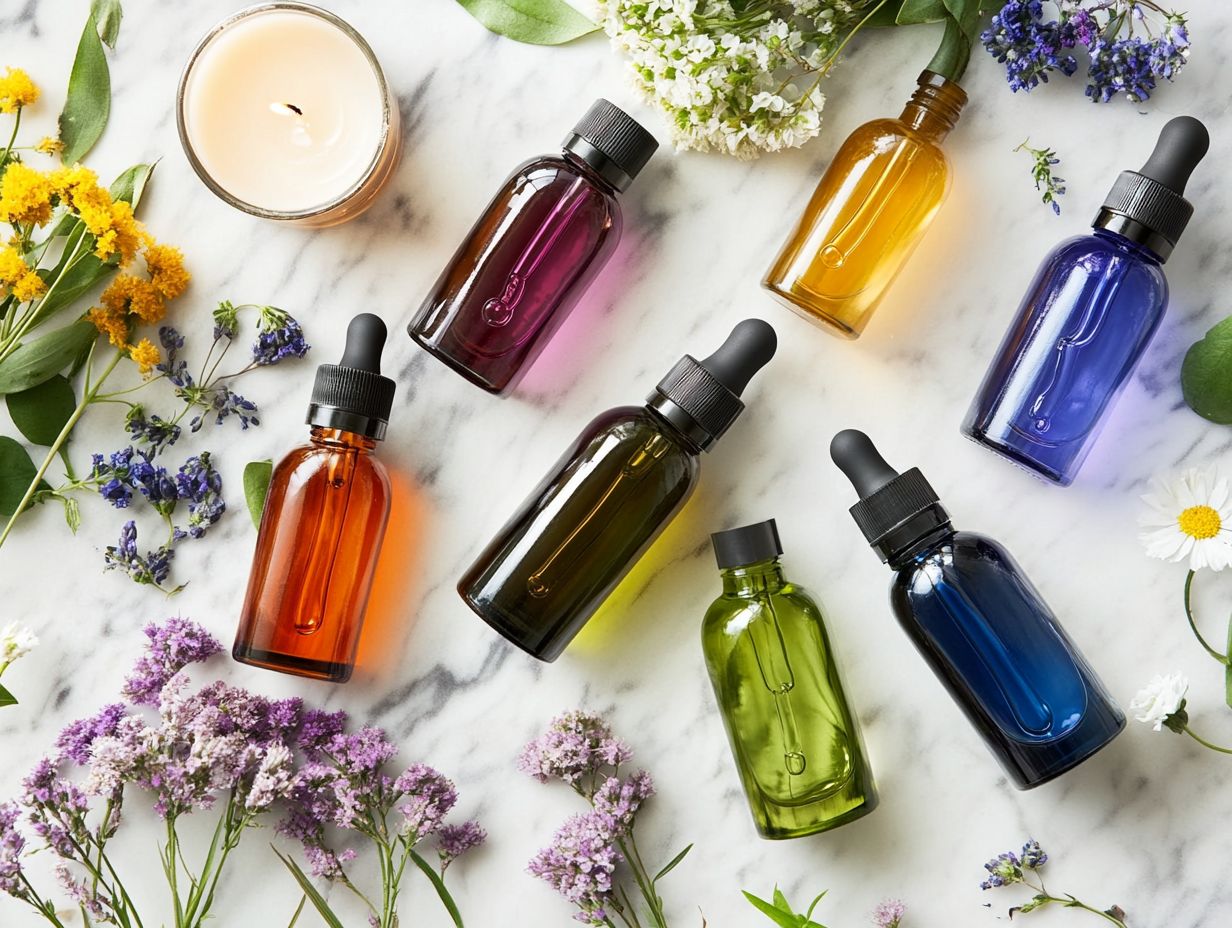
A step-by-step guide to layering body oils with perfume can significantly enhance my fragrance experience, ensuring I achieve a personalized scent that lasts all day. This technique allows me to express my individuality while keeping my fragrance noticeable yet not overpowering.
To begin, I select a body oil that complements my chosen perfume. I pay attention to the notes, ensuring that they align—such as pairing floral scents with floral notes or citrus with fresh aromas.
Once I’ve chosen the right body oil, I apply it generously to areas where I plan to use the perfume, focusing on pulse points like my wrists and neck.
Finally, I lightly spritz the perfume over these areas, being careful not to overwhelm the senses. For optimal results, I prefer lightweight lotions or creams that allow the fragrance to flourish. I always remember to let each layer dry before applying the next, maximizing scent interaction and ensuring longevity throughout my day.
Choosing the Right Combination of Scents
Selecting the right combination of scents is crucial for developing a personalized fragrance that aligns with my unique style and preferences.
I find that the art of scent experimentation provides a valuable opportunity to explore a variety of scent profiles, whether I am drawn to floral, woody, or fresh notes.
By understanding the characteristics of different fragrance layers, I can create complex combinations that enhance the overall aromatic experience.
This process involves not only choosing compatible fragrances but also considering my personal taste and the desired impact of the scent.
Factors to Consider
When selecting the right combination of scents for fragrance layering, I consider several factors to ensure a pleasant and harmonious experience. For more insights, check out Why You Should Try Fragrance Layering with Body Oils.
First and foremost, individual scent preferences are crucial, as each person’s unique taste determines which aromas resonate with them. Additionally, I recognize that skin chemistry plays a significant role in how a fragrance develops; the natural oils and pH levels of my skin can transform a scent, giving it a distinct character.
I also take into account the occasion for wearing these layered fragrances. For instance, a light floral combination may be appropriate for daytime events, while deeper, more complex notes might be better suited for evening gatherings. By acknowledging these variables, I can create a tailored fragrance profile that complements my personal style.
Tips for Long-Lasting Fragrance
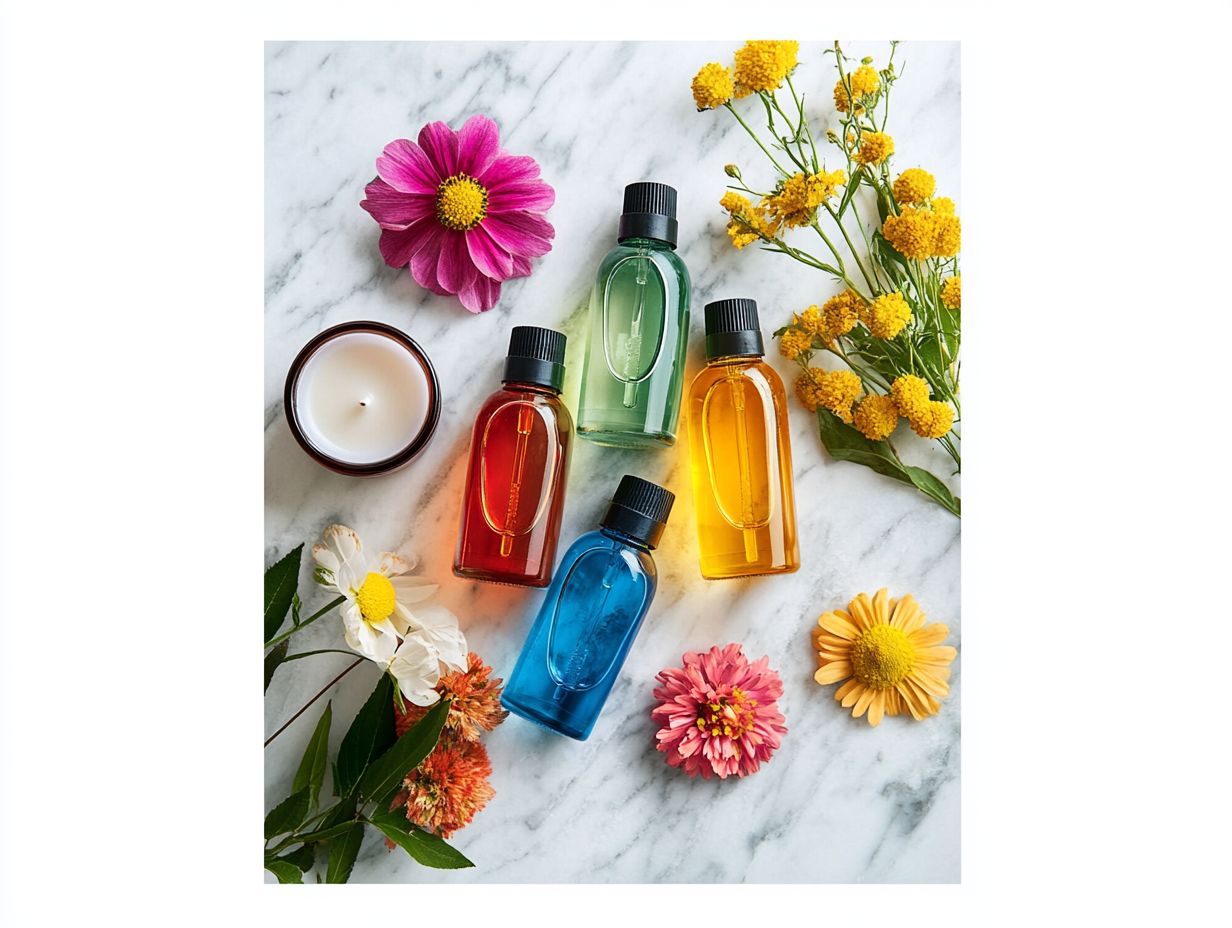
To achieve a long-lasting fragrance that endures throughout the day, I have found several effective strategies that can enhance both the longevity and overall impact of my chosen scents.
First, I apply fragrance oils and body products to well-moisturized skin, as this helps to lock in the scents for greater durability. Additionally, I utilize layering techniques that focus on complementary scent profiles, which creates a more lasting aromatic experience.
By employing fragrance tips such as strategic application points and understanding scent memory, I can significantly improve how long my fragrance lasts and how it evolves over time.
How to Make Your Scent Last All Day
To ensure my scent lasts throughout the day, I find that implementing effective application techniques and understanding scent interaction is essential.
One of the most reliable methods involves applying fragrance to pulse points—those areas on the body where blood vessels are closest to the skin. These pulse points, which include the wrists, behind the ears, and at the base of the throat, generate warmth that helps diffuse the scent over time.
I also prioritize layering fragrances by using body washes, lotions, and oils that share similar scent profiles, as this can significantly enhance longevity. Additionally, I consider how my individual body chemistry interacts with fragrance notes. Factors such as skin type, diet, and hormonal changes can all influence how a scent develops, creating a unique signature experience that varies from person to person.
Potential Risks and Precautions
I recognize that while fragrance layering can significantly enhance the aromatic experience, it is important to consider potential risks and take necessary precautions to avoid skin sensitivities and adverse reactions.
Possible Skin Sensitivities
I recognize that possible skin sensitivities can arise from fragrance layering, particularly when combining various scented products without a clear understanding of their ingredients.
These sensitivities can manifest as irritations, rashes, or allergic reactions, especially in individuals with pre-existing skin conditions or sensitive skin. Common irritants often found in fragrance oils include alcohol, certain allergens, and synthetic compounds, which can trigger adverse reactions.
To mitigate these risks, I find it essential to identify potential irritants by carefully reading ingredient labels. Additionally, performing a patch test on a small area of skin before full application can help me detect any adverse reactions before they escalate, allowing me to enjoy fragrances without compromising my skin health.
When to Avoid Fragrance Layering
There are specific circumstances when I find it advisable to avoid fragrance layering to prevent any unwanted discomfort or adverse reactions.
For example, individuals with sensitive skin conditions like eczema or psoriasis may discover that combining multiple scents can worsen irritation or trigger allergic reactions. Additionally, during medical treatments that heighten skin sensitivity, it is prudent for me to minimize fragrances to prevent any interference with the healing process.
Moreover, I recognize that workplaces and certain public spaces may impose restrictions on strong scents due to potential allergens or sensitivities among others. In such situations, I believe that opting for lighter, single-note fragrances can be a more appropriate approach, allowing for personal expression while ensuring I do not overwhelm those around me.


